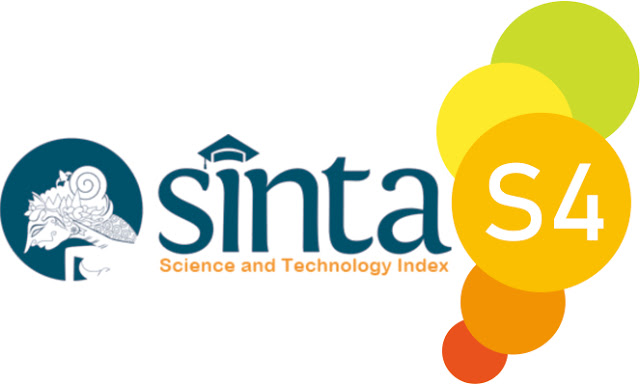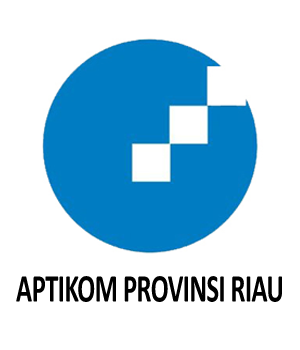Application Of Simple Additive Weighting (SAW) For The Selection Of Breast Milk Pumps For Working Mothers
Abstract
Optimal breastfeeding is very important because it can save more than 800,000 lives of children under five every year. Among the many reasons why mothers do not exclusively breastfeed is that they go back to work (22.5%). Homemakers have a greater chance of exclusively breastfeeding because they spend more time with the baby, allowing them to breastfeed optimally. Based on the results of previous studies, working mothers give breast milk directly (when they are at home or resting) and give milk from milk. Using a breast pump is considered more practical, easier and saves time. The breastpump method (MPA) for exclusive breastfeeding for working mothers also does not interfere with the work process and offers flexibility in working hours. What worries women who work while breastfeeding is maintaining breast milk production during working hours. However, according to research, there is no significant difference between the effectiveness and satisfaction of breast milk production when using an electric breast pump. The use of a breast pump does not affect the amount of breast milk produced, even though an electric breast pump provides more effectiveness and satisfaction in expressing breast milk. This study aims to select the type of breast pump for working mothers to facilitate exclusive breastfeeding of the baby. The result of the calculation of SAW method resulted in a recommendation for a breast pump Moom Uung with a value of 15.67 The result of the calculation of SAW method resulting in a recommendation for a breast pump Moom Uung with a value of 15.67.
Downloads
References
G. Arage and H. Gedamu, “Exclusive Breastfeeding Practice and Its Associated Factors among Mothers of Infants Less Than Six Months of Age in Debre Tabor Town, Northwest Ethiopia: A Cross-Sectional Study,” Adv. Public Heal., vol. 2016, pp. 1–7, 2016, doi: 10.1155/2016/3426249.
Suparmi and I. Saptarini, “DETERMINAN PEMBERIAN ASI EKSKLUSIF : ANALISIS DATA SEKUNDER SURVEI DEMOGRAFI DAN KESEHATAN INDONESIA 2012 Determinant of Exclusive Breastfeeding : Secondary Data Analysis Indonesian Demographic and Health Survey 2012,” J. Kesehat. Reproduksi, vol. 5, no. 01, pp. 15–21, 2014.
B. dkk Sammantha, “KEBERHASILAN PEMBERIAN ASI EKSKLUSIF OLEH IBU BEKERJA,” J. Ilmu Kebidanan dan Kesehat., vol. 7, no. 2, pp. 62–72, 2016.
S. Anggreni, S. Mudayatiningsih, and N. Maemunah, “Pengaruh penggunaan pompa ASI (MPA) terhadap pemberian ASI Eksklusif pada ibu yang bekerja di wilayah Tlogomas kota Malang,” Nurs. News (Meriden)., vol. 3, no. 1, pp. 1–11, 2018, [Online]. Available: https://publikasi.unitri.ac.id/index.php/fikes/article/view/747.
S. N. Maula and M. N. Widyawati, “The Effect of Electric Breast Pump in Increasing Breastmilk Production,” Proc. Int. …, pp. 129–134, 2017, [Online]. Available: https://publications.inschool.id/index.php/icash/article/view/136.
S. Butsianto and O. Subagja, “Sistem Pendukung Keputusan Untuk Menentukan Siswa Bermasalah Dengan Metode Simple Additive Weighting (Saw) Studi Kasus : SMK Negeri 1 Cikarang Pusat,” JSI J. Sist. Inf., vol. 10, no. 2, pp. 1578–1591, 2018, doi: 10.36706/jsi.v10i2.8053.
Ni Kadek Sukerti, “‘Sistem Penunjang Keputusan Penerima Bantuan Desa dengan Metode SAW,’” J. Inform., vol. 14, no. SPK, pp. 84–92, 2014.
N. Eka P, S. Widya Sihwi, and R. Anggrainingsih, “Sistem Penunjang Keputusan Untuk Menentukan Lokasi Usaha Dengan Metode Simple Additive Weighting (SAW),” J. Teknol. Inf. ITSmart, vol. 3, no. 1, p. 41, 2016, doi: 10.20961/its.v3i1.648.
F. Aziz and A. S. Purnomo, “Sistem Penunjang Keputusan Penentuan Reward Bagi Mitra Terbaik Menggunakan Metode Simple Additive Weighting ( SAW ) ( Studi Kasus : PT . Telkom Akses ),” vol. 11, no. 2, pp. 91–96, 2021.
R. M. Kosanke, “Sistem Penunjang Keputusan Pemilihan Paket Pernikahan Menggunakan Metode Simple Additive Weighting (SAW),” J. Inf. Technol., vol. 04, pp. 01–05, 2019.
C. A. Amelia Wisma Rini, “SISTEM PENUNJANG KEPUTUSAN KELAYAKAN SERTIFIKASI GURU DENGAN MENGGUNAKAN METODE SAW (Simple Additive Weighting) Studi Kasus SMAN 1 Pringsewu,” Technol. Accept. Model, vol. 7, 2016.
A. D. Syahputra and G. Priyandoko, “Sistem Penunjang Keputusan Pemilihan Pengurus Bem Menggunakan Metode Fmadm ( Fuzzy Multiple Additive Decision Weigth ) Dengan Metode Saw ( Simple Additve Weigth ),” no. Ciastech, pp. 389–394, 2019.
M. Rani, R. Ardiansyah, A. Agusti, D. Erdriani, and N. Husna, “Sistem Penunjang Keputusan Pemilihan Supplier Di Tia Pet Shop Dengan Metode (Saw),” JURTEKSI (Jurnal Teknol. dan Sist. Informasi), vol. 8, no. 1, pp. 111–116, 2021, doi: 10.33330/jurteksi.v8i1.1320.
R. Agustin and H. Irawan, “Sistem Penunjang Keputusan Pemilihan Supplier Terbaik Dengan Menggunakan Metode Simple Additive Weighting ( Saw ) Pada Pt . Berca Schindler Lifts,” J. IDEALIS, vol. 2, no. 2, pp. 214–221, 2019.
I. J. Dewanto and M. F. Arrozi, “Membangun Sistem Penunjang Keputusan Untuk Investasi Saham Dengan Metode Saw,” Semin. Ris. Teknol. Inf. tahun, 2016.
A. W. Ida Farida, “Penerapan Metode Simple Additive Weighting ( SAW ) dalam Sistem Penunjang Keputusan Untuk Menentukan Tempat Prakerin,” vol. 5, pp. 85–93, 2023.
M. D. Rosyadi, “Penerapan Metode Simple Additive Weghting (Saw) Pada Aplikasi Sistem Penunjang Keputusan Untuk Pemeliharaan Jalan,” Technol. J. Ilm., vol. 8, no. 4, p. 224, 2017, doi: 10.31602/tji.v8i4.1121.
D. P. Misbahul Munir, Fitri Marisa, “Mahasiswa Penerima Beasiswa Dengan Metode Simple Additive,” Spirit, vol. 10, no. 2, pp. 32–40, 2018.
S. Saleh and T. Fedrik, “Prototype Sistem Penunjang Keputusan Penentuan Kelayakan Gudang Penerimaan Pupuk Pusri dengan Metode Simple Additive Weigthing (SAW),” Expert J. Manaj. Sist. Inf. dan Teknol., vol. 6, no. 2, 2016, doi: 10.36448/jmsit.v6i2.772.
A. Siswono, N. Bahiyah, and P. Sokibi, “Untuk Menentukan Kelayakan Penerima Program Raskin Menggunakan Metode Simple Additive Weighting ( Saw ) Pada Kelurahan Kesambi,” vol. 7, no. 1, pp. 62–73, 2017.
T. Mufizar, D. S. Anwar, and E. Aprianis, “Sistem Pendukung Keputusan Pemilihan Jurusan Dengan Menggunakan Metode SAW Di SMA 6 Tasikmalaya,” Voice Of Informatics, vol. 5, no. 1, pp. 1–13, 2016, [Online]. Available: http://voi.stmik-tasikmalaya.ac.id/index.php/voi/article/view/5/2.
R. Firdaus, “Sistem Penunjang Keputusan PNS Berprestasi dan Teladan Dilingkungan Dinas Kominfo Kabupaten Tanah Datar,” SANTI (Sistem Inf. dan Teknol. Informasi), vol. 1, no. 1, pp. 38–48, 2021.
A. S. Putra, D. R. Aryanti, and I. Hartati, “Metode SAW (Simple Additive Weighting) sebagai Sistem Pendukung Keputusan Guru Berprestasi ( Studi Kasus : SMK Global Surya),” Pros. Semin. Nas. Darmajaya, vol. 1, no. 1, pp. 85–97, 2018, [Online]. Available: https://jurnal.darmajaya.ac.id/index.php/PSND/article/view/1233/763.
A. Prasetio, N. Mulyani, and F. M. Yuma, “Metode SAW dalam Penentuan Pemberian Kredit Calon Konsumen pada PT. Interyasa Mitra Mandiri,” J-Com (Journal Comput., vol. 1, no. 1, pp. 65–72, 2021, doi: 10.33330/j-com.v1i1.1090.
H. Nurrahmi and B. Misbahuddin, “Perbandingan Metode SAW (Simple Additive Weighting) Dan AHP (Analytic Hierarchy Process) Pada Sistem Pendukung Keputusan Pemilihan Karyawan Terbaik,” Sainstech J. Penelit. dan Pengkaj. Sains dan Teknol., vol. 29, no. 1, pp. 65–69, 2019, doi: 10.37277/stch.v29i1.322.
Copyright (c) 2022 Novita Indriyani, Ahmad Fauzi, Andika Bayu Hasta Yanto

This work is licensed under a Creative Commons Attribution-ShareAlike 4.0 International License.
This is an open-access article distributed under the terms of the Creative Commons Attribution-ShareAlike 4.0 International License which permits unrestricted use, distribution, and reproduction in any medium. Users are allowed to read, download, copy, distribute, search, or link to full-text articles in this journal without asking by giving appropriate credit, provide a link to the license, and indicate if changes were made. All of the remix, transform, or build upon the material must distribute the contributions under the same license as the original.















